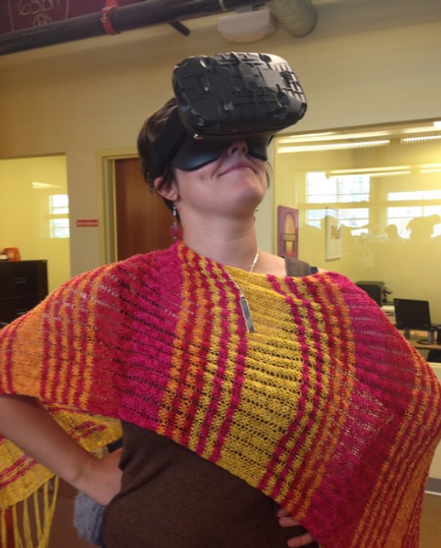Protect the Meeper
Protect the Meeper
What's My Title?

What's Water Bears?
Water Bears VR is a virtual reality puzzle game that was created for the then newly released HTC Vive. In each level, players build and repair pipe systems to redirect water to dehydrated water bears.
Project Overview
Game Details
- Game built for: Schell Games
- Genre: VR puzzle game
- Platform: HTC Vive
- Game Engine: Unity
- My roles: Game designer (UX, etc.)
Logistics Breakdown
- Year: 2015
- My Time on the Project: 3 months
- Project Duration: 8 months
- Core Team size: 12

Gameplay
Process
My Contributions
-
Worked with the team to port Water Bears, Schell Games' systems thinking game for the iPad, to the HTC Vive
-
Worked with engineers and design director to develop a new UI and interaction system for VR
-
Worked with artists to pitch and concept new physical spaces for abstract game levels to exist in
-
Concepted and implemented new end-of-level celebration moment
-
Worked with team to develope a set of behaviors for the water bears so that players can interact with them at the end of the level
-
Built a new VR-first demo level to prove out a variety of interaction concepts
-
Assisted with converting all original iPad levels to VR
-
More info about the game available at: http://waterbearsgame.com/
Demo Level Design
-
The demo level's design was intended to prove out several concepts:
-
Provide a fun level that can be completed in 3 minutes without additional tutorials
-
Encourage the player to walk all the way around the puzzle, taking full advantage of the Vive's available floor space
-
Invite the player to build interesting structures out of the pipes in their inventory
-
Invite the player to pick up and play with the water bears when the puzzle is completed
-
-
Constraints: puzzle needed to be at the center of the playspace, reachable by the majority of players
-
Emphasis on walking around the play area, looking above and below the puzzle, playing with pipes
-
Level design involved several phases of iteration, including multiple naive playtests
-
Finished level successfully introduced players to the game mechanics, invited them to get creative with their pipe placements and rewarded them at the completion of the puzzle with playful water bears
Top-down sketch
Early whitebox
Final iteration








Screenshot from the original iPad game
VR Design Challenges
-
Many of the UI elements from the original iPad interface were too abstracted for use in VR (e.g. level selection, pipe selection, delete pipes, rotate pipes) and had to be redesigned to a more physically representative form
-
Levels in the iPad game floated in an abstract space—in VR, puzzles needed to be placed in the scene in a way that was accessible to players of all heights
-
At the time, the Vive hand controllers have very few universally accepted standards for control, so we needed to design a new, easy-to-use control scheme and accompanying visual cues for core mechanics (e.g. picking up and dropping pipes, selecting new pipes from the inventory, interacting with the water bears, etc.)

The much-anticipated arrival of the HTC Vive dev kit at Schell

Hand-based pipe selection UI concept

Waist-height turntable concept

Flow diagram describing player/water bear interaction behavior

Design document for a table-based inventory system (overview)

Design documentation for a table-based inventory system (details)